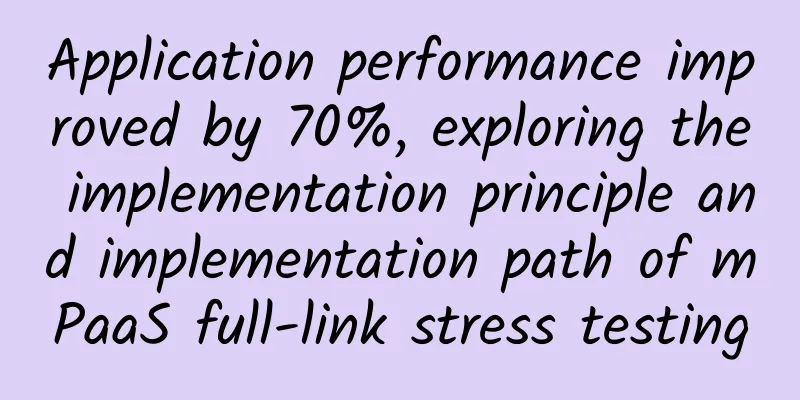Managing a data center requires foresight

|
More and more businesses are finding that in order to compete in this new digital age, they must build applications that engage and empower customers. To achieve this, they must often combine these applications with legacy systems that often store critical customer data. As a result, they are taking a two-pronged approach to digital transformation. They build new applications for customer engagement and transform legacy systems to provide data and perform transactions requested by the new applications. For a data center, managing its evolving infrastructure and the vast and trivial IoT data will also require this "forward-looking" approach. Data center management software not only needs to collect new equipment in real time and analyze infrastructure data, but also needs to study the data of existing equipment. Therefore, new and old equipment in the data center can be better monitored and managed. The most experienced and skilled data center operators use advanced technology to connect and communicate with almost any device. This will require modular management software that can communicate and manage both existing and new devices. As data centers continue to grow and more IoT data emerges, data center management tools will take full advantage of the large amounts of data for prediction and diagnosis of data center systems.
Today, more devices are connecting to the Internet. Most of these devices are equipped with sensors that collect data about themselves. It is estimated that the number of IoT devices will reach 20 billion in 2017. According to IDC, by 2020, IoT devices will create 44 terabytes of data each year. Regardless of the accuracy of these numbers, it is known that millions of IoT devices are connected to the network every year. IoT devices share data with other systems, providing diagnostic information or notifying operators when a failure occurs. IoT devices pass on a lot of data and information, and data centers are the holders of all this data, especially if the data center needs to take some action. For example, data center equipment will have cooling systems equipped with sensors to measure operating temperatures. If the building's temperature rises too much, the system will adjust the flow of cooling water or air to remedy the situation. Other sensors connected to physical systems can help determine when a failure is about to occur, alerting data center operators to impending failures and risks. These alerts are based on collecting large amounts of data over time to understand how the system is operating and by identifying slight changes in the data that can indicate that equipment may soon fail. The potential cost savings of avoiding outages will be huge for data centers and manufacturing companies. So, because IoT devices have huge benefits, their application in data centers will have a significant impact. Imagine millions of cars connected to the internet, transmitting vast amounts of data about their performance and maintenance. Imagine tens of millions of wearable devices transmitting health information to a central database. Can future data centers handle this massive influx of data? Will server capacity and bandwidth be sufficient to handle the influx of data centers? It is feasible to have 10,000 users connected through a data center. What about 10 million users? Do enterprises have the right management systems in place to properly manage and scale their infrastructure? The first step in preparing to support the Internet of Things is to evaluate your infrastructure to see if there are any gaps in its monitoring capabilities. Success in preparing for the Internet of Things comes down to how easily connected devices communicate and how they are monitored. Here are six key areas to consider when evaluating data center management and IoT readiness:
Data centers first need to be ready for IoT device connectivity, where all components are connected and work together to maintain uptime. This is critical for businesses. Many data centers have already deployed some form of data center management tools. In fact, these tools can collect sensor data across multiple devices to help enterprises manage infrastructure. These tools lay the foundation for the application of the Internet of Things, which can actually manage more and more sensor data. After connecting devices, the ability to review past data and predict future analysis will ensure the viability of data center businesses in the next few years. |
>>: Reality or illusion? Challenges of NFV adoption in the enterprise
Recommend
How to configure OVN load balancer?
Translator profile: Zheng Minxian works for Nooyu...
Exposing "black data": Your personal information has been passed through several hands
[[188851]] According to feedback from industry in...
How to solve the TCP packet sticking and unpacking problem when using Netty communication? The answer is so simple
[[311931]] This article will explain the followin...
Ethernet Packet Architecture
[[352785]] 01Overview The term Ethernet generally...
Using data to speak, Hubo Technology helps improve college students' critical thinking and research capabilities
Recently, in order to enrich product functions an...
Making WAN ubiquitous: SD-WAN still has huge room for development
[[177476]] The impact of globalization has become...
CloudCone: $9.5/year-512MB/30GB/3TB@1Gbps/Los Angeles data center
Updated again, CloudCone's Christmas promotio...
With HTTP protocol, why do we need Websocket?
[[428410]] WebSocket is a full-duplex communicati...
What is Single Pair Ethernet (SPE) and how is it used in industrial applications?
[[416579]] Single-pair Ethernet was originally de...
Ruijie-style innovation: Ruijie Networks 2017 product and solution strategy released in Beijing
On March 31, Ruijie Networks held its 2017 produc...
Review: China ranks first in 5G mobile phone sales, is the world happy too?
After the Spring Festival of the Year of the Ox, ...
Don’t let digital experience get in the way of your business strategy
Do you remember the last time you expressed your ...
NASA to launch laser communications relay demonstration mission this year
According to foreign media, NASA has a mission ca...
Comparative analysis of three types of CDN vendors: Technologically innovative ones lead the way
Preface: With the explosion of live video, the ri...
Three years after the license was issued, has 5G commercialization been successful?
It coincides with the third anniversary of China...









